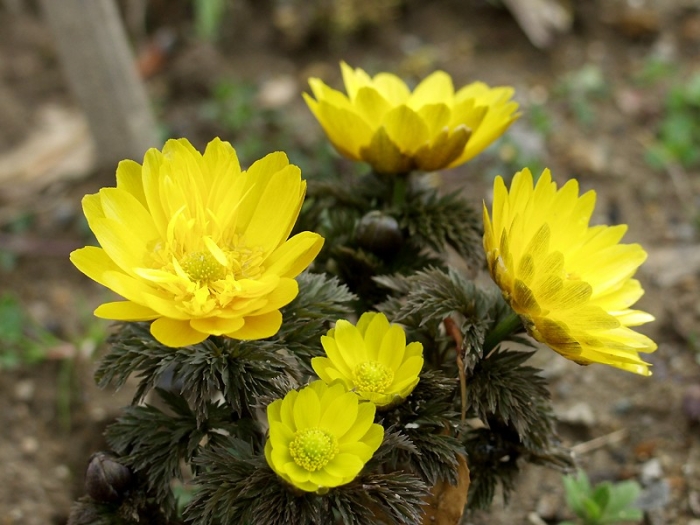Amur Adonis
(Adonis amurensis)
Amur Adonis (Adonis amurensis)
/
/

カールおじさん
CC BY-SA 3.0
Image By:
カールおじさん
Recorded By:
Copyright:
CC BY-SA 3.0
Copyright Notice:
Photo by: カールおじさん | License Type: CC BY-SA 3.0 | License URL: http://creativecommons.org/licenses/by-sa/3.0/ | Uploader: Kloisiie | Publisher: Wikimedia Commons | Title: W_hukujusou3021.jpg | Notes: == {{int:filedesc}} == {{Information |Description ={{en|1=''Aeonium urbicum'', habit. W Tenerife, Teno mountains, valley S of Santiago del Teide, W of Tamaimo, open shrubland, ca. 600 m above sea level.}} {{de|1=''Aeonium urbicum'', Habitus. W Tener... |


















Estimated Native Range
Summary
Adonis amurensis, commonly known as Amur adonis or pheasant’s eye, is a perennial herb that is part of the Ranunculaceae family. It is native to forest margins, slopes, and semi-shaded areas of broad-leaved forests in regions such as China (Heilongjiang, Jilin, Liaoning), Japan (Hokkaido), Korea, and the Russian Far East (Primorye, Amur, Sakhalin). The Japanese name Fukujusō translates to fortune-longevity-plant, reflecting cultural significance. This plant typically grows to a height of 0.5 feet and a width of 0.2 feet, featuring a clump-forming habit with finely dissected leaves. The golden yellow flowers bloom in early spring, often before the foliage fully emerges, and are quite showy against the barren landscape of late winter.
Amur adonis is valued for its early spring flowers, which can add vibrant color to rock gardens, woodland gardens, and borders. It is also used in traditional medicine in its native regions. Gardeners appreciate its low maintenance and the fact that it is not favored by deer. For successful cultivation, Amur adonis requires well-drained soil rich in organic matter and consistent moisture. It thrives in full sun to part shade conditions. While generally pest-free, it can be susceptible to root rot if overwatered or planted in poorly draining soils. It is not known to be invasive when grown outside its native range, but care should be taken to avoid overly wet conditions to prevent disease.CC BY-SA 4.0
Amur adonis is valued for its early spring flowers, which can add vibrant color to rock gardens, woodland gardens, and borders. It is also used in traditional medicine in its native regions. Gardeners appreciate its low maintenance and the fact that it is not favored by deer. For successful cultivation, Amur adonis requires well-drained soil rich in organic matter and consistent moisture. It thrives in full sun to part shade conditions. While generally pest-free, it can be susceptible to root rot if overwatered or planted in poorly draining soils. It is not known to be invasive when grown outside its native range, but care should be taken to avoid overly wet conditions to prevent disease.CC BY-SA 4.0
Plant Description
- Plant Type: Herb
- Height: 0.6-1 feet
- Width: 0.12-0.2 feet
- Growth Rate: Moderate
- Flower Color: Yellow
- Flowering Season: Spring
- Leaf Retention: Deciduous
Growth Requirements
- Sun: Full Sun, Part Shade
- Water: Medium
- Drainage: Slow, Medium, Fast
Common Uses
Deer Resistant, Low Maintenance, Showy Flowers
Natural Habitat
Forest margins, slopes, and semi-shaded areas of broad-leaved forests
Other Names
Common Names: Pheasant’s Eye, 복수초
Scientific Names: , Adonis amurensis, Adonis amurensis f. viridescensicalyx, Chrysocyathus amurensis, Adonis barthei, Adonanthe amurensis, Adonis amurensis f. argentatus, Adonis amurensis f. nanus, Adonis amurensis subsp. nanus, Adonis amurensis var. angustiloba
GBIF Accepted Name: Adonis amurensis Regel & Radde